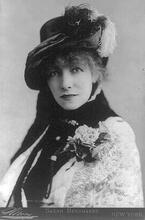Myriam Moscona
Myriam Moscona is a Sephardic Mexican poet, novelist, journalist, and translator. She is the author of Tela de sevoya/ Onioncloth, an award-wining novel about the Sephardic experience, reflecting on death and Ladino, and Ansina (Like that, 2015), a book of poetry entirely written in Judeo-Spanish. Onioncloth manages to represent the individual, family, and collective voices of the Sephardic diaspora. It revolves around two fundamental circumstances: a girl loses her father at the age of eight and then spends her childhood and puberty, until the age of fourteen, sharing a room with her grandmother. The conflictive relationship between the narrator-child and her grandmother is the most shocking, terrifying, and disturbing aspect of the book. Moscona outlines an ugly, unpleasant, malicious, moody woman, who represents traditional values.
Family and Education
Poet, novelist, journalist, and translator Myriam Moscona was born in Mexico City on March 11, 1955. Her parents, Leon Moscona Benaroya (administrator for a textile company) and Lydia Yosifova (an opera singer), were from Plovdiv and Sofia, Bulgaria, respectively. After World War II, they immigrated first to Israel in 1948, and then to Mexico in 1951. Moscona’s grandparents joined them in Mexico as well in 1954, except for her maternal grandfather, who had died earlier. Myriam was raised in a multilingual environment, listening to Bulgarian and Judeo-Spanish, while using Spanish as she grew up. Her father passed away in 1963, when she was only eight years old. She has an older brother, Miguel. She was married to journalist Humberto Musacchio, and has a daughter, Natalia, and two granddaughters.
Moscona studied communications and started a career as a journalist. She worked as a cultural news anchor for Canal 22 in Mexico and has done, throughout the years, weekly columns for a variety of newspapers.
Multifaceted Writing Career
Moscona has published eleven books of poetry, including Las visitantes (The Visitors, 1989), El árbol de los nombres (The Tree of Names, 1992), Negro marfil (2006, translated by Jen Hofer as Ivory Black, 2011), El que nada (The One who Swims, 2006), Ansina (Like That, 2015), and La muerte de la lengua inglesa (The Death of the English Language, 2021). She has also written a novel, Tela de sevoya (2012, translated by Jen Hofer and John Pluecker as Onioncloth, 2017), and is also the author of De frente y de perfil. Semblanza de poetas (interviews, 1994) and Por mi boka. Textos de la diáspora sefardí en ladino (By my Mouth. Texts of the Sephardi Diaspora in Ladino, co-edited with Jacobo Sefamí, 2013).
Moscona’s poetry has been translated into Greek, German, French, English, Swedish, Portuguese, Hebrew, and Arabic. She has received numerous prizes, including the National Poetry Prize of Aguascalientes (Mexico, 1989), a Guggenheim Fellowship (2006), and the prestigious Xavier Villaurrutia Prize (Mexico, 2012). She has been the recipient of writing fellowships from Mexico’s FONCA (Fondo Nacional para los Creadores de Arte, equivalent to the United States’ National Endowment for the Arts) on numerous occasions.
Although Moscona’s books are articulated through different themes, the motif of displacement characterizes her entire oeuvre. Moscona carries with her the sensation of migration and movement. Memory is a persistent catalyst for her work; she constantly returns to the orb of the past, particularly in books related to Descendants of the Jews who lived in Spain and Portugal before the explusion of 1492; primarily Jews of N. Africa, Italy, the Middle East and the Balkans.Sephardic matters.
Moscona’s early poetry included some autobiographical references. For example, in "Elegía" (Elegy), she writes about the death of her mother. In “Carta de naturalización” ("Letter of naturalization"), she embodies the voice of the apátrida (stateless), in search of roots lost in history. Rituals and liturgies are ghosts that re-emerge in Las visitantes (The Visitors) and later appear in the eroticism and sacredness of El árbol de los nombres (Tree of Names), although always with a skeptical, mocking tone that emerges from a critical female, powerful voice.
Sephardic Motifs: Onioncloth
Many of Moscon’a’s works invoke Sephardic motifs. Moscona looks back at the language of her grandmothers, the Judeo-Spanish or Ladino that mirrors modern Spanish. She does so as if it personified a remote past returning from its ashes, the death that confirms agony but at the same time is a breath of life that blows a “feeling of promise and expulsion that remained like a breath thrown in the glass” (Moscona, 1992, 32). Her major achievement in this regard is the novel Tela de sevoya (Onioncloth), a book that manages to represent the individual, family, and collective voices of the Sephardic diaspora.
Tela de sevoya is made up of texts with six different titles that appear in no visible order:
1) an autobiographical novel that tells the adventures of a girl who lost her father at eight years old ("Focal Length");
2) a semi-autobiographical travel diary of an adult woman who goes back to her roots in Bulgaria and other Sephardic countries (“From the Travel Diary”);
3) an informative text about the exile of the Jews expelled from Spain in 1492 and their dispersion throughout the world ("Paperweight");
4) a series of testimonials that bring together diverse voices from the Sephardic diaspora (“The Fourth Wall”);
5) a chapbook of poems about evanescence (“Kantikas Songs,” later integrated into her book Ansina); and
6) a ghostly account of the dreams and inner obsessions of a girl/woman who talks to the dead ("Windmill").
The novel revolves around two fundamental circumstances: a girl loses her father at the age of eight and then spends her childhood and puberty, until the age of fourteen, sharing a room with her grandmother. The loss then extends to the rest of the family (mother and grandmothers), who also die, and to the Ladino language itself. The female protagonist travels to Sofia and Plovdiv in Bulgaria—and to other sites of the Sephardic diaspora, such as Thessaloniki in Greece; Istanbul and Izmir in Turkey; as well as Jerusalem and Madrid—in search of traces of her past and heritage. Judeo-Spanish appears insistently (for example, in "Paperweight"), as if it mirrored the dispossession of her ancestors’ disappearance. But the language also works like a time machine, returning to the remote past, to the expulsion from Sepharad: “Konservamos kozas espanyolas ke vozotros ya tenesh olvidadas i pedridas. Podemos darvosh pedasikos del pasado en el presente” [“We preserved Spanish things that you have already forgotten and lost. We can return bits of past to you in the present”] (Onioncloth, 95)
The conflictive relationship between the narrator-child and her grandmother is the most shocking, terrifying, and disturbing aspect of the book. Instead of portraying a conventional grandmother, Moscona breaks with the nostalgic cliché and outlines an ugly, unpleasant, malicious, moody woman, who represents traditional values:
We sleep in the same room. When she takes off her clothes, I'm amazed by the long baggy underwear that covers half her body. Later she loosens the upper part and when she unfastens the armature of her brassiere, her gigantic breasts spill out, reaching almost to her waist. They seem to me like skin-covered watermelons with no flesh. She doesn't have the slightest modesty, yet she criticizes me for showing my legs with those miniskirts she detests […] my flabby, sour faced abuela, [I know] her unpleasant smells and the stained underwear she takes off in front of me without the least concern. […]// She is a hefty woman. She had surgery on one of her eyes and the patch is off-kilter, the gap is visible. I am afraid of her threats; she always tells me that her misfortunes are going to transfer to me. The opening where her eye should be is so very deep (Onioncloth, 71, 112).
Moscona thus presents a dispute between the past and the present, the Ladino and the Spanish, emphasizing the differences through the changing role of women in society. The girl and her grandmother end up cursing each other. In a key scene, "an old woman lying in her bed turns her face to the left, lets out a sonorous bit of stomach gas, tells her granddaughter that she does not forgive her (para una preta kriatura komo sos, no ai pedron / for an evil little girl like you there is no forgiveness) and dies" [Onioncloth, 12] The protagonist carries that burden, that responsibility of being a “last creature” of the Sephardic link, and the book constitutes a restitution, a way to compensate for the loss of her ancestors, her language, her culture. Since the grandmother is the main interlocutor in the story, it is through her that the past, childhood, and language are recovered. Those are the byervos i las dichas (words and sayings) that emerge in the speaker’s ear and, somehow, compensate for the loss with their simple evocation.
The dialogue between one language and the other, between the ancient world and the present, sometimes becomes funny and, simultaneously, creepy. See, for example, this dialogue between the girl and her grandmother: "—What time is it, abuela? / —Ocho kere vente. Twenty to eight./ —Don't talk like that. What time is it, abuela? / —Ocho kere kinze. Quarter to eight./ —You don’t know how to tell time. What time is it, abuela? / —Nunka ni no, hanum. Las ocho son. La ora de dormir. We can agree to disagree, hanum. Eight it is. Time to go to sleep. / —I'm not tired. / —A echar, hanum. A pishar i a echar. Time to lie down, hanum. To go to pee, and then to lie down. / —No, I want to watch TV./ —Deja esos maymunes. Leave those talking monkeys./ —No, why? Just so you know: my other grandmother lets me watch cartoons. / —Le dire a tu madre. I’ll tell your mother./ —So, tell her./ —Le dire a tu padre. I’ll tell your father./ —My dad already died. / —Yo avlo kon el kada noche. Kada noche me dize ke esta arraviado kon ti. I talk with him every night. Every night he tells me he’s angry at you./ —Liar, he’s not mad at me./ —No se dize menteroza. We don’t call people liars./ —You’re crazy! / —Me vas i a mi matar. A todos matatesh tu. You are going to kill me too. You killed everyone./ —I didn't kill anyone./ —Lo matatesh a tu padre por muncho azerlo araviar. You killed your father by making him angry so often " (Onioncloth, 8).
Writing in Judeo-Spanish
Later, Moscona and Jacobo Sefamí co-edited Por mi boka (By my Mouth, 2013), an anthology of writing in Judeo-Spanish. Their intention was to trace, in broad strokes, Judeo-Spanish’s trajectory from its beginnings in the Lit. (Greek) "dispersion." The Jewish community, and its areas of residence, outside Erez Israel.Diaspora, after the expulsion from Spain, to the most recent work in the twenty-first century. Rather than represent each of the language’s regional and historical variants, the anthology included a small selection of early religious literature and concentrated on the contemporary period.
With Ansina (Like that, 2015), an entire book of poetry written in Ladino, Myriam Moscona paradoxically gave freshness to the language. Her critical attitude demystifies the tragedy of the diasporic journey (just as she had done by transgressing the usual portrayal of the grandmother in Onioncloth), in addition to displaying a critical attitude that questions the very genre of poetry. She is thus the first Ladino antipoet (a poet who questions the work of poetry), the first to play with the language in an avant-garde way, the first to refer to issues unrelated to the experience of exile, the first to use humor.
Ansina contains thirty poems, divided into five sections of irregular length. Although it is supposedly written entirely in Judeo-Spanish, Spanish is also present. That is to say, Moscona avoids the “purity” that a single language would mean and prefers dialogism and hybridity. As a Mexican and as a Sephardic Jew, Myriam Moscona has learned to combine her worlds, to mix languages, even to reinvent language (words such as “empolvaduras,” “morideros,” or “eskrivideros” are not commonly used in Ladino and could be said to be linguistic inventions of the author).
“Eskrivir de amor o sensya” (“To Write about Love or Science”) could serve as the poetics of the book. Rather than limiting the language to an oral tradition that uses romances, sayings, or songs as a vehicle to find family ties, Moscona implies that Ladino should also be used for worldly, scientific, and other matters:
la lingua sirve [language serves
para el rakonto to count
de estreyas stars
para studiar to study
insektos insects
para apanyar to trap
ladrones thieves
i kriyar ijos and to create children
i pajaros and birds
… …
(para limpiarse (to clean
los dientes teeth
la lingua language
se guadra mui is kept way
detrás)]. back)]
(Ansina, my trans., 54-55)
For this reason the book resorts equally to family memory ("Empolvaduras” / Dusty Matters), to the dead who are grieving ("De Morideros" / Deadlands), to science (“De Sensya” / From Science), to the (kabalistic) creation of the universe (“De Kreaziones i Undimientos” / Of Creations and Sinking), and to writing itself (“De Eskrivideros” / Of Writinglands).
Ansina mocks itself, adopts a critical attitude; it inherits Dadaist nihilism, calling into question the very concept of art or poetry, although it maintains the musicality, the back and forth of prose and verse, and the simple and plain colloquial (often with notes in Spanish). In “Papel de kuatro” [(Paper in four), the desire for writing is questioned, the effort to preserve the old, the idea of resistance to the imminent death of the language. Instead, the poem uses sense of humor to mock the solemnity with which the lyrical genre is usually associated: “Eskrivo una kantika kada diya (I write a poem each day) / es mentira (it’s a lie) / la dovlo en kuatro (I fold it in four) / i esos papeles (and those papers) / kon eskritura antikua (with old writing)/ a la perra sirven (to the dog serve) / para pishar en eyos (to pee in them): / es verdad (it’s true) (Ansina, my trans., 64).
Ansina is a book fully inserted in the contemporaneity of Mexican poetry. Simultaneously, it manages to bring the musicality inherited from the fifteenth century into dialogue with humor, uneasiness, the interweaving of languages, and the nihilism of our time.
Poetry
Las visitantes (The visitors). Mexico City: Joaquín Mortiz, 1989.
El árbol de los nombres (Tree of names). Guadalajara: Secretaría de Cultura, Jalisco.
Negro marfil. Ivory Black. Translated by Jen Hofer. Los Angeles: Les Figues Press, 2011.
El que nada (The one who swims). Mexico City: Era, 2006.
Ansina (Like that).Madrid/ Mexico City: Vaso Roto, 2015.
La muerte de la lengua inglesa (Death of the English Language). Oaxaca: Almadía, 2021.
Novel
Tela de sevoya. Onioncloth. Translated by Jen Hofer and John Pluecker. Los Angeles: Les Figues Press, 2017.
Edited volumes
Por mi boka. Textos de la diaspora sefardí en ladino (By my Mouth. Texts of the Sephardic Diaspora in Ladino). Edited with Jacobo Sefamí. Mexico City: Lumen, 2013.
“La paradoja de promesas y exilios.” Noaj. Revista literaria (Jerusalem) 7-8 (December 1992): 31-33.














